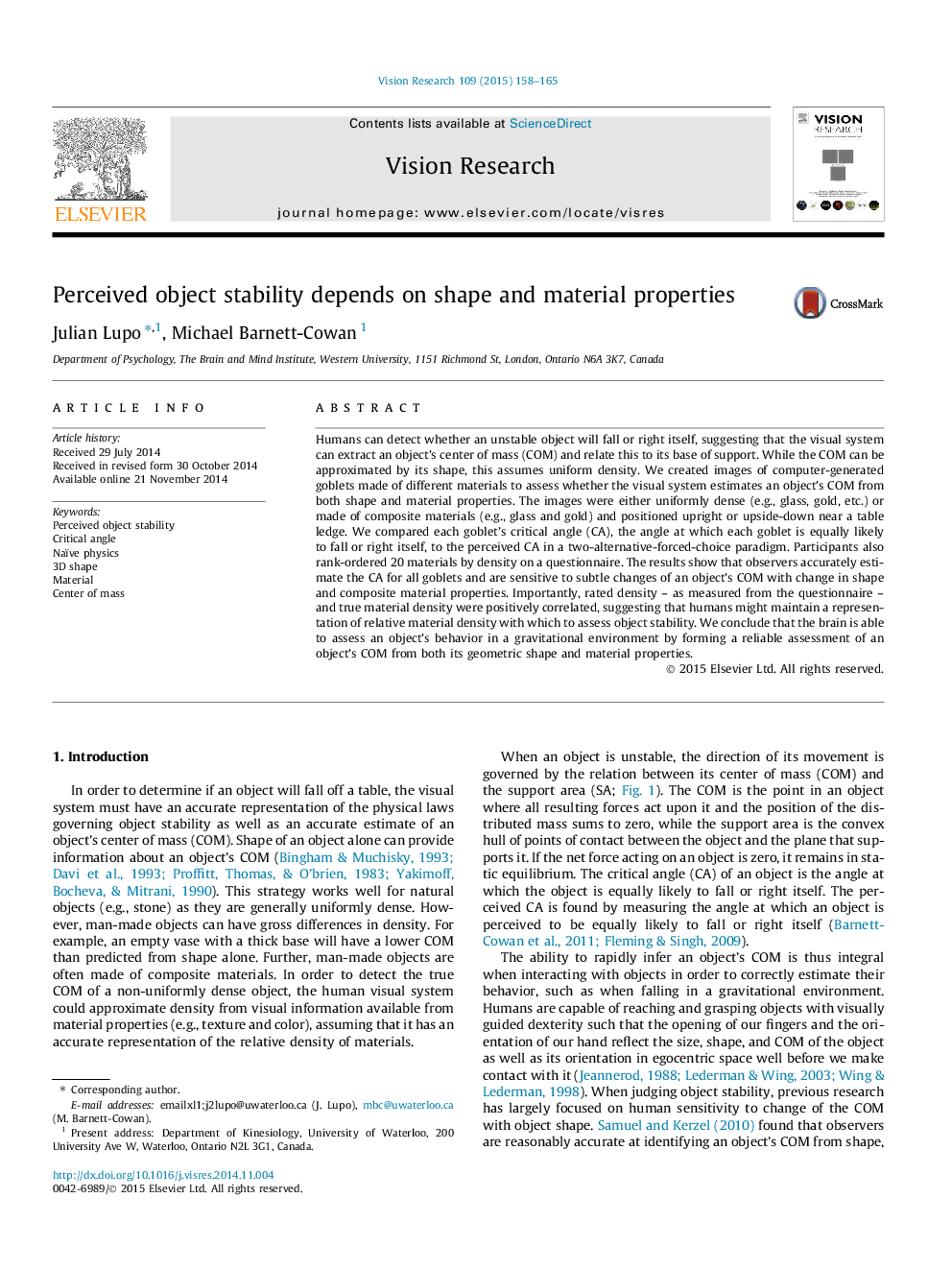| Article ID | Journal | Published Year | Pages | File Type |
|---|---|---|---|---|
| 6203205 | Vision Research | 2015 | 8 Pages |
â¢Perceived object stability is reasonably accurate in accordance with physical laws.â¢Humans maintain a representation of relative material densities.â¢Perceived object stability depends on both shape and material properties.
Humans can detect whether an unstable object will fall or right itself, suggesting that the visual system can extract an object's center of mass (COM) and relate this to its base of support. While the COM can be approximated by its shape, this assumes uniform density. We created images of computer-generated goblets made of different materials to assess whether the visual system estimates an object's COM from both shape and material properties. The images were either uniformly dense (e.g., glass, gold, etc.) or made of composite materials (e.g., glass and gold) and positioned upright or upside-down near a table ledge. We compared each goblet's critical angle (CA), the angle at which each goblet is equally likely to fall or right itself, to the perceived CA in a two-alternative-forced-choice paradigm. Participants also rank-ordered 20 materials by density on a questionnaire. The results show that observers accurately estimate the CA for all goblets and are sensitive to subtle changes of an object's COM with change in shape and composite material properties. Importantly, rated density - as measured from the questionnaire - and true material density were positively correlated, suggesting that humans might maintain a representation of relative material density with which to assess object stability. We conclude that the brain is able to assess an object's behavior in a gravitational environment by forming a reliable assessment of an object's COM from both its geometric shape and material properties.
